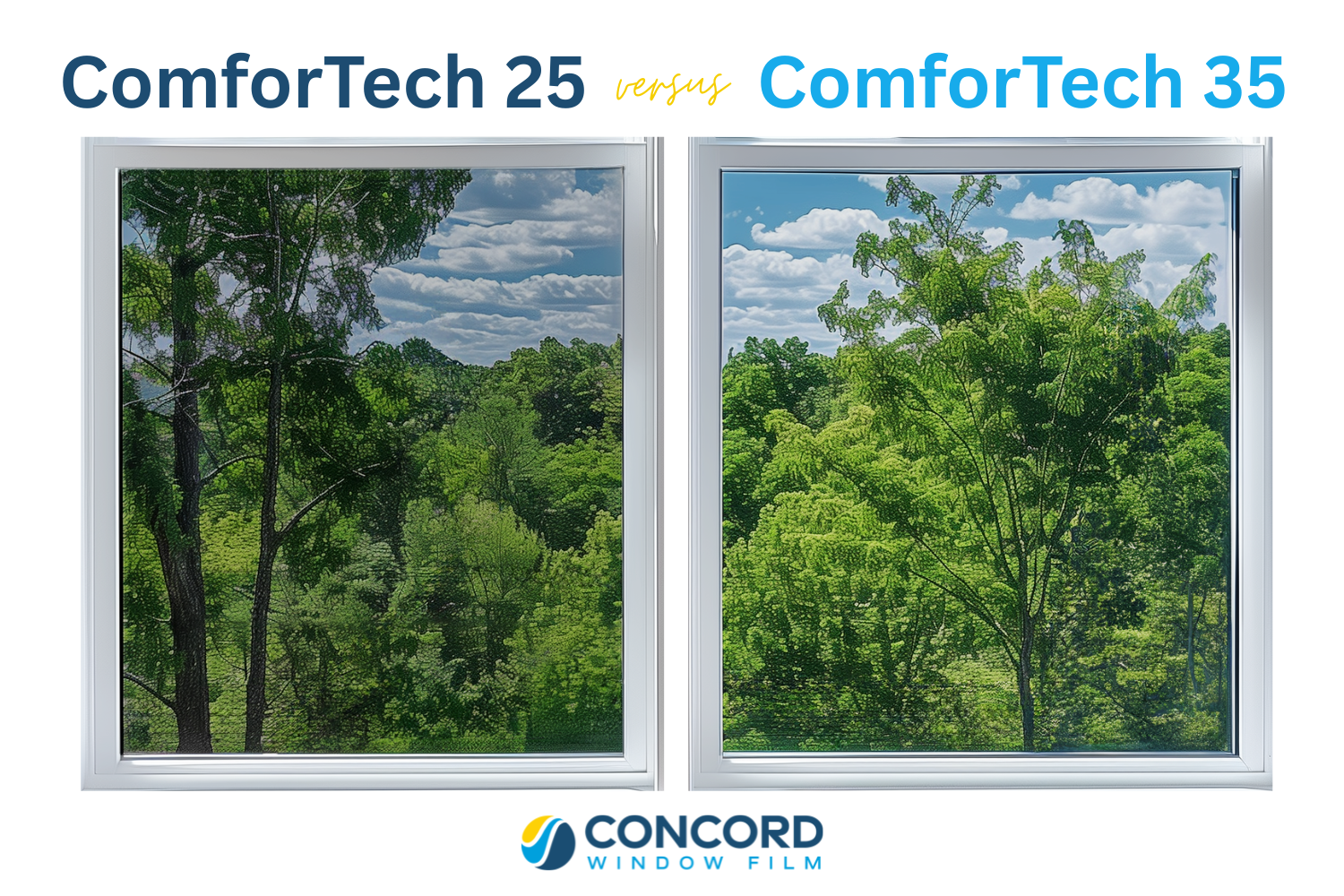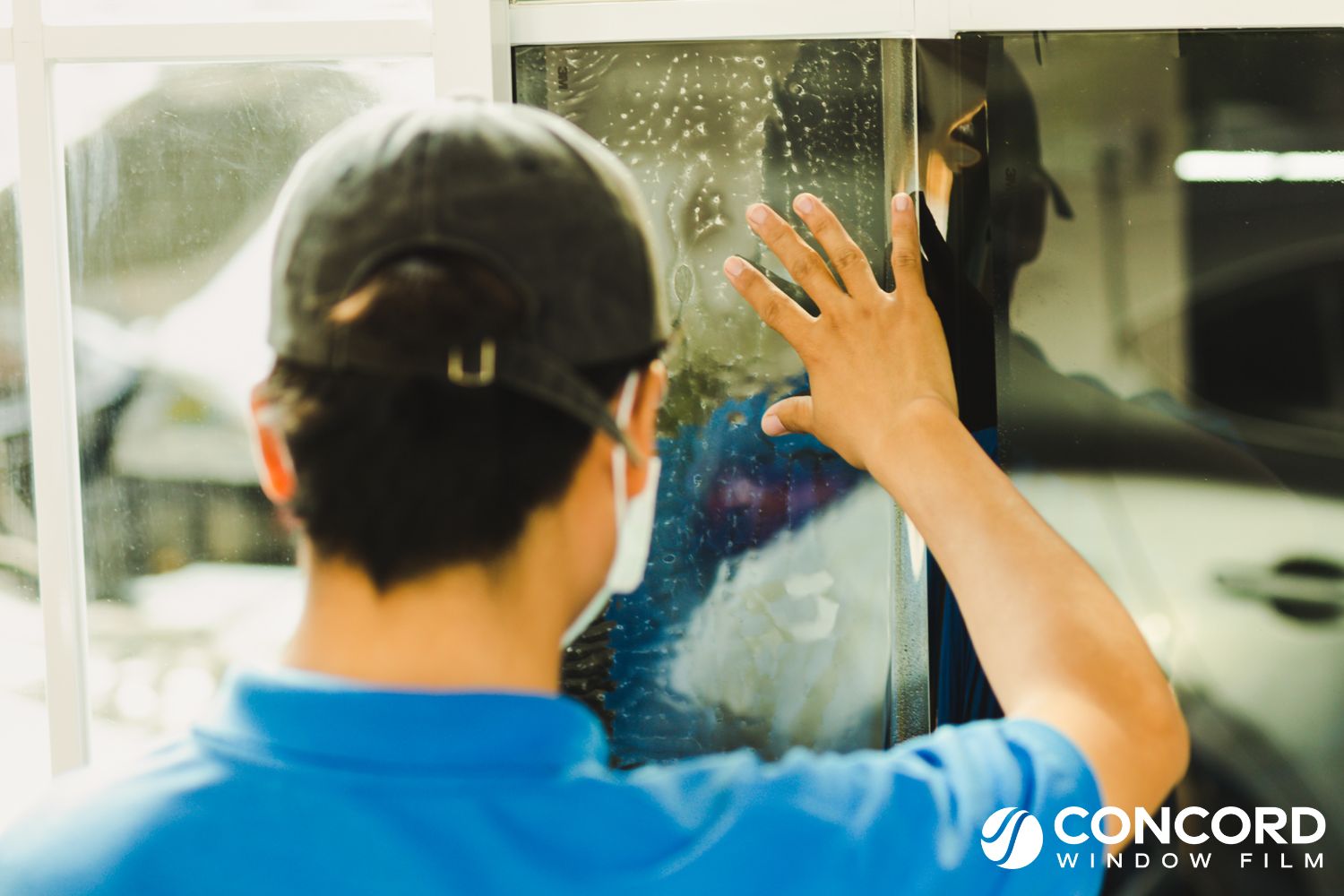
FREE SHIPPING ON PRECUT KIT ORDERS OF $100 OR MORE

Thinking about tinting your windows and wondering what the difference is between static cling vs. adhesive window films? Read on for the answers.
When it comes to enhancing your privacy, reducing heat and glare, or adding a touch of style to your windows, window films are a fantastic solution. However, not all window films are created equal. Two popular options on the market are static cling and adhesive window films.
In this blog post, we will explore the key differences between static cling vs. adhesive window films to help you make an informed decision about which one is right for your needs.
Static cling window film, also known as non-adhesive window film, is designed to adhere to glass surfaces without the need for any adhesive or sticky substances. Instead, it utilizes material physics (not static electricity!) to stay in place. Think of it as acting more like a suction cup on a clean flat surface.
Static cling films are typically made from PVC and are thicker than adhesive window films. They are often not as optically clear as adhesive films due in part to this thickness.
Here are some of the advantages and disadvantages of static cling window film:
Static cling films are incredibly easy to install. They can be applied without the need for any special tools or expertise. All you need is a squeegee and some patience.
One of the significant advantages of static cling film is that it is reusable. You can remove it from your windows and reapply it as many times as you like, making it an ideal option for renters or those who like to change their decor frequently.
Since there is no adhesive involved, static cling films leave no sticky residue behind when removed. This makes them a clean and convenient option.
Static cling films may not last as long as adhesive films. The “stickiness” of the film degrades over time with use and exposure making them more prone to peeling or detaching from the glass over time. This weakness is exacerbated in high-heat or high-humidity environments. And they may be negatively affected by cleaning agents.
As mentioned above, because of the different material and thickness used for static cling films, the optical clarity of the film may not be as clear and crisp as adhesive films.
Adhesive window film, as the name suggests, uses an adhesive to adhere to glass surfaces. It provides a more permanent and robust solution compared to static cling films. There are a couple of types of adhesives used with window film: dry and pressure-sensitive. Read more about these adhesive types.
Here are the pros and cons of adhesive window film:
Adhesive window films are typically more durable and long-lasting than static cling films. They can withstand extreme temperatures and varying humidity levels without peeling or bubbling.
Adhesive films often provide better privacy and energy efficiency, as they create a tighter seal on the glass and are less prone to air gaps.
Once applied, adhesive window film is more challenging to remove, and it may leave adhesive residue on the glass, requiring additional cleaning. This can be seen as a negative if you live in a temporary, rented space or don’t want the film on your windows permanently.
Installing adhesive films can be a bit more challenging than static cling films. It may require a bit more precision and patience.
But the reality is with a quality 2 Mil adhesive backed film, installation is pretty comparable. Installation gets tricky with thin 1 mil films that tend to crease and/or pressure-adhesive films that can stick to themselves or something else once the liner is removed.
Learn more about window film installation!
The choice between static cling and adhesive window film depends on your specific needs and preferences:
You value ease of installation, plan to frequently change your window film, and prefer a residue-free solution. Static cling films are ideal for temporary applications and situations where you want flexibility and where optical clarity is not paramount.
You prioritize durability, long-term performance, and professional-grade heat-blocking capabilities. Adhesive films are suitable for those looking for a more permanent solution.
Concord Window Film does not offer static cling films. We supply professional-grade solar control, privacy, and safety films that are meant to be permanently applied to your windows. This ensures maximum durability and performance for your home.
Both static cling and adhesive window films have their merits, and the right choice depends on your individual requirements. Consider your budget, aesthetic preferences, and how long you intend to keep the film on your windows when making your decision.
Whether you opt for the easy versatility of static cling or the durability of adhesive window film, both options offer an effective way to enhance the appearance and functionality of your windows.